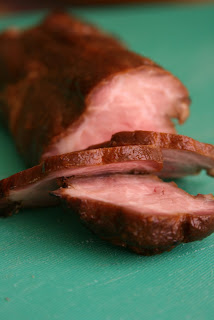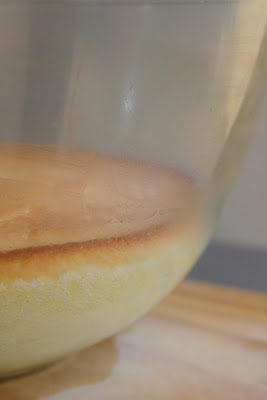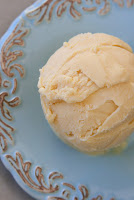
I love Asian food. I could regale with you endless tales of my culinary adventures in China and Viet Nam. But I will spare you, your life is too short. Consider your thank yous gracefully received.
But the thing is that I rarely cook Asian food. There is a reason for this - I totally suck at it. To cook Asian food well you need to be able to balance flavours. I struggle with this. It ends up bland, or too salty or too sweet or too something.

But naturally, that has not stopped me from buying cookbooks on the subject. Oh no!!!

And so we have Challenge Books #14 and #15. Into the Vietnamese Kitchen I bought after I returned from living in Hanoi. A Little Taste of China I bought after a trip along the Silk Road. Until now, I have never made a single thing from either. Shame on me!!!!!
Fortunately, the
KJ Wants a Kitchen Aid Challenge has forced me to rectify this. There was no great difficulty in deciding what I would make - char siu bau (or pork buns to most of us). I am a nibbler by nature. My perfect eating habitat is having lots of different little dishes to choose from. I was born for yum cha.
The first step to Char Siu Bau is Char Siu (barbecued) Pork. I kinda wish I could infuse the whole process with the mystery of the orient, by making it out to be all complex and mysterious and hard. But really, there is nothing easier. It's just a question of mixing up the marinade and leaving the pork overnight so you end up with this.

And then roasting in the oven so you end up with this.


The recipe suggests pork shoulder. I used pork neck which was on special at the butchers. I had to cook it a bit longer than the recipe specified to get it done. But that's hardly mystical - I have a dodgy oven.
Next, came the dough. Again, there is nothing different here to most other yeast doughs. Just mix some basic ingredients together and leave to rise. Perhaps the only difference is that the dough is activated by kneading in baking powder as the last step.

This dough is fabulous to work with. It is lovely and soft and pillowy.
While the dough was rising I converted the cha sui pork into filling for the buns. The pork is diced and mixed with some oyster sauce, sesame oil, sugar and rice wine. It literally took all of five minutes.

I ended up doubling the amount of filling suggested in the recipe. I rolled my dough quite thinly so I could fit much more into each bun.
Now it was just a question of rolling out little circles of dough and adding some filling. The dough is gathered up over the top and pressed together to seal.

To be authentic they should be cooked in bamboo steamers over a wok. As I do not own bamboo steamers or a wok, I used a metal steamer over a stockpot. It worked just fine.

I steamed them seam side down to form little smooth balls.

And was all this effort worth it. Oh yes!!! Oh my, YES!! They were fantastic. Incredibly tasty and delicious. My neighbours came over and we scoffed the lot in one sitting. I was ever so delighted with how they came out.
I still have a couple of strips of pork tucked away in my freezer, so these buns will be making a reapparance in my kitchen soon.
Char Siu Pork(adapted from Into the Vietnamese Kitchen)1.1kg of boneless pork shoulder
marinade2 cloves garlic, minced
2 tbspn sugar
1/2 tspn chinese five spice powder
3 tbspn hoisin sauce
2 tbpn honey
1 1/2 tbspn shaoing rice wine or dry sherry
2 tbpsn light soy sauce
1 tbspn dark soy sauce
2 tspn sesame oil
Cut the pork into strips about 15cm long and about 5 cm thick.
Mix all the marinade ingredients together in a large bowl. Add the pork and coat evenly. Cover and refrigerate for 6 to 8 hours, turning 2-3 times.
Remove the pork from the fridge about 45 minutes before you wish to begin cooking. Place a rack in the top third of the oven and heat to 250C.
Line a roasting tray with alfoil and add a roasting rack. Put the pork on the rack with plenty of space in between each piece.
Roast the pork in the oven, basting with the marinade every ten minutes. To do this, roll the pork in the marinade using tongs.
The recipe suggests:
The pork is done when it looks glazed and charred. It should register about 63C on a meat themometer. This should take about 30-35 minutes.
My experience:
The pork was still very rare at this stage. I cooked it for about 50 minutes, at which point it was cooked but ever so slightly pink.
Remove from the oven and allow to rest for 10 minutes to seal in the juices. Thinly slice the pork and serve warm or at room temperature.
It can be frozen for up to 3 months.
Basic Yeast Dough(adapted from A Little Taste of China)3 tbspn sugar
250ml of warm water
1 1/2 tspn dried yeast
400gm of plain flour
2 tbspn oil
1 1/2 tspn baking powder
Dissolve the sugar in the water and add the yeast. Stir lightly and then set aside for ten minutes, until foamy.
Sift the flour into a bowl, add the yeast mixture and the oil. Mix to a rough dough and then turn out onto a lightly floured surface. Knead for 8-10 minutes or until the dough is light and elastic.
Lightly coat the dough in oil and place in a bowl. Leave to rise for about 3 hours.
Punch the dough down. At this stage it can be stored in the refrigerator for later use.
To use the dough, make a well in the centre and add the baking powder. Knead the dough until it is well incorporated.
Char Siu Bau(adapted from A Little Taste of China)1 tspn oil
250gm char siu pork, diced
3 tspn shaoxing rice wine
1 tspn sesame oil
2 tbspn oyster sauce
2 tspn light soy sauce
2 tspn sugar
1 qnty of basic yeast dough
Heat the oil. Add the pork, wine, sesame oil, oyster sauce, soy sauce and sugar and cook for 1 minute.
Divide the dough into 12 or 24 pieces depending on how big you want your buns. Roll the dough into circles with the edges thinner than the middle.
For small buns, place 1-2 tspn of filling into the centre of the dough circle. For big buns, use 3-4 tspns. Use as much filling as you can comfortably manage. Pinch the top together and ensure they are well sealed.
Place the buns into a steamer lined with greaseproof paper. Cover and steam over simmering water for about 15 minutes. The buns should be well risen and skewer inserted into the centre should come out hot.








































